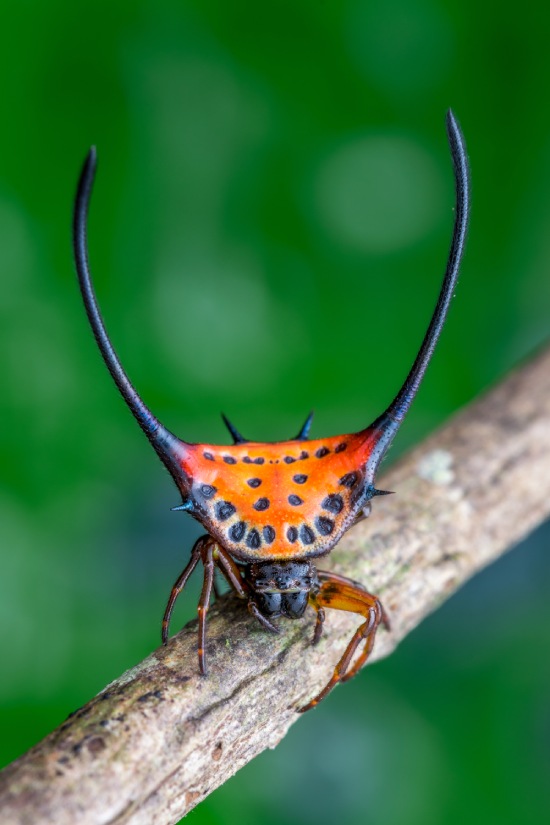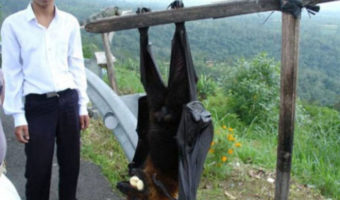Can You Judge a Spider by its Horns? The Horned Spider Looks Scary, but Is Harmless
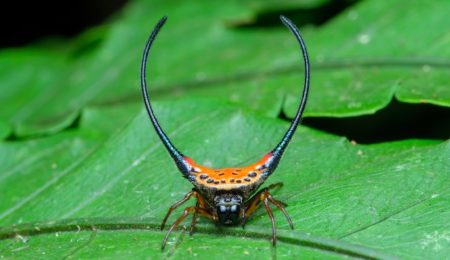
Our world is a whole of spiders. They creep and crawl on walls, inside closets, and backyards, mostly causing terror and ensuing shrieks while spinning their webs around us! But even someone with the worst kind of arachnophobia cannot look away from a few of the world’s most beautiful and coolest-looking spiders. The horned spider, specifically the long-horned orb-weaver spider, is one of them.
What makes the long-horned orb-weaver spiders unique are two unusually long and slightly curved horns growing out of their abdomens. Doesn’t sound very spider-like. Read on to learn some fascinating facts about these arachnids and a few other exotic spiders that definitely demand an audience!
Table of Contents
Beautiful and Terrifying: Meet the Long-Horned Spider of the Macracantha family
The horned Spider, scientifically known as Macracantha arcuate, is a member of the family of Asian orb weavers. More than 2,500 species of orb weavers are known for their spiral wheel-shaped webs. A few stand out spectacularly from the rest due to their unique appearance and incredible display of colors. One such species is the long-horned orb-weaver.
Looking like a creature from a magical fairy tale, these long-horned orb weavers display vivid color patterns between their upper and lower surfaces. They can be yellow and red or white and black. But the two long spines resembling antennas that come out of their abdomens give these spiders a terrifying but spectacular look!
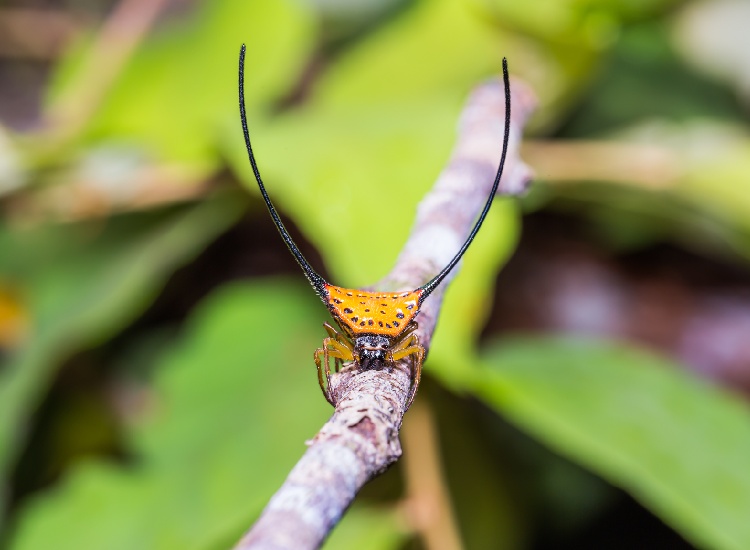
Size-wise, these spiders are quite small. The female body length is an average of 0.8-1.0 inches, whereas the males are even smaller. The long-horned orb-weavers earned their name from Danish zoologist Johan Christian Fabricius, who was the first one to acknowledge these spiders as different, distinctive species in 1793. They are native to India, China, Southeast Asia, and Borneo.
The horns of the orb weavers are spines coming out from their abdomens.
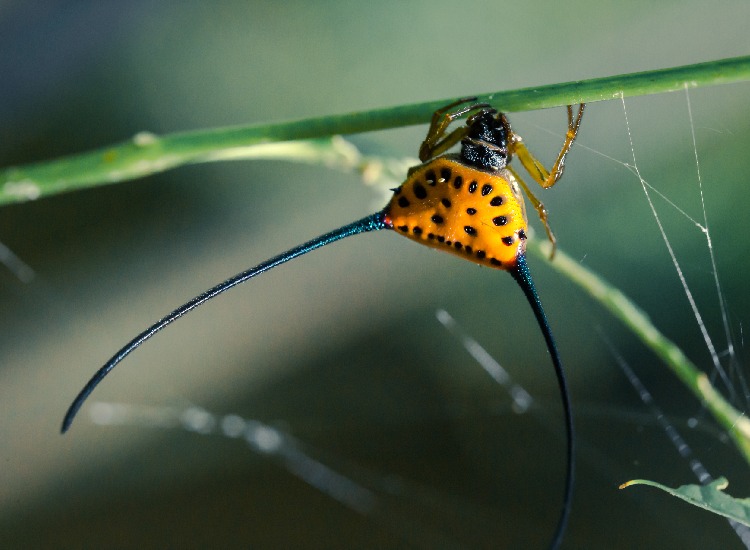
The long-horned orb-weavers have extremely tough, shell-like abdomens with three pairs of spines. In the case of the females, these spines stand out. They are horns that project upwards, becoming slightly curved towards each other at the top. These horns are almost three times as long as their bodies. The other two spines are short and, in comparison, unassuming. The males have spines on their abdomens but are smaller and less extravagant.
Despite terrifying looks, the horned spiders are harmless.
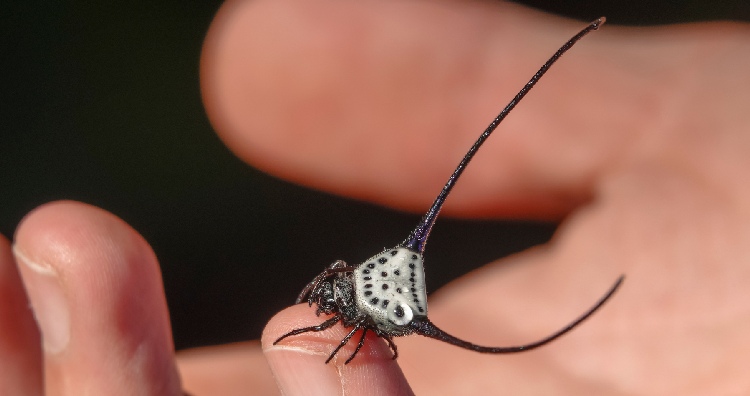
The meeting could be pretty terrifying if someone closely encounters the horned spider with two long spines that look like an intrusive weapon. But looks can be deceptive. Despite giving off fatal vibes, the long-horned orb-weaver is harmless and poses no threat to humans.
No one is quite sure what these long horns do, but scientists and researchers believe that they may be defensive. Due to their horn-like spines, predators like birds or lizards find it extremely difficult to swallow these spiders and, therefore, stay away.
As members of the orb-weaver family, their webs are circular. But unlike other spiders, the female horned spiders do not sit on their webs to catch prey. Instead, they wait beneath the leaves nearby for mosquitoes, small insects, flies, or moths. This way, they also remain safe from predators.
Like the horned spiders, these look so unique that they almost seem to have been photoshopped by a clever hand!
1 The Brazilian jewel tarantula, the most beautiful spider in the world.
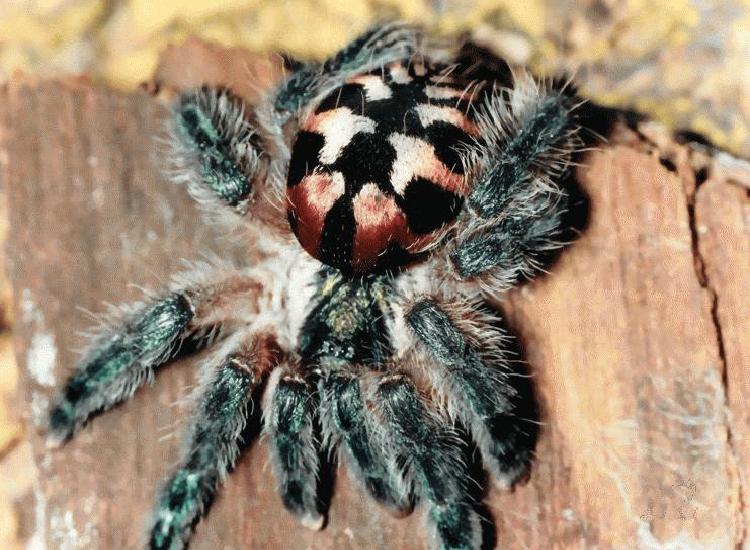
Typhochlaena caledonia, commonly known as the “Brazilian jewel tarantula,” is often considered the most exquisitely colored and unique spider in the world. Tarantulas usually have a terrible reputation for being evil, dangerous, black, brown, and hairy.
In short, it’s scary!
But when you see the beautiful Brazilian jewel tarantula, the myth breaks! This arboreal trapdoor spider originally comes from Brazil’s tropical forests and grasslands. They are tiny in size, measuring 2-2.5 inches, reclusive in nature, mostly hiding in their web caves, high up in the trees, camouflaged, or sealed up in their trapdoors that they build in the bark of trees. They have beautiful, metallic shimmer on their bodies in colors like bright blues and whites with pink fuzzy legs and a teal and white covering. Their abdomens are also teal and blue, hinting at black and white.
2 Is it a spider? Is it an ant? Meet the ant-mimicking jumping spider.
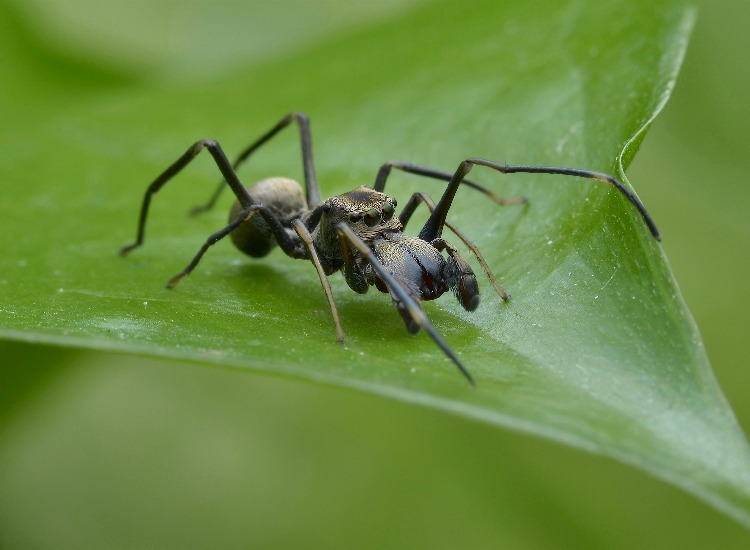
The Myrmarachne formicaria, or the “ant-mimic jumping spider,” found throughout North America, is just one of the many in the Myrmarachne genus comprised solely of ant-mimicking jumping spiders. They have evolved to be super long and skinny, and the males have long chelicerae (mouthparts) that resemble worker ants carrying loads. Not just physically, but there is behavioral mimicry, too. These spiders wave their front legs to mimic ants and run zigzag-like ants.
According to researchers, this phenomenon is purely defensive and is also called “Batesian mimicry.” Mimicking ants is a viral defense mechanism amongst arthropods, especially spiders. Though predators are usually not equipped with chemical defenses, spiders are always on their own! On the other hand, Ants are aggressive defenders, equipped with a nasty sting and biting jaws. They can also use pheromones to summon fellow ants to help! Predators usually avoid ants because of this. If a spider can look and behave like an ant, predators like wasps, birds, or more enormous spiders typically leave them alone!
3 A sparklemuffin! This spider looks as cute as its name.
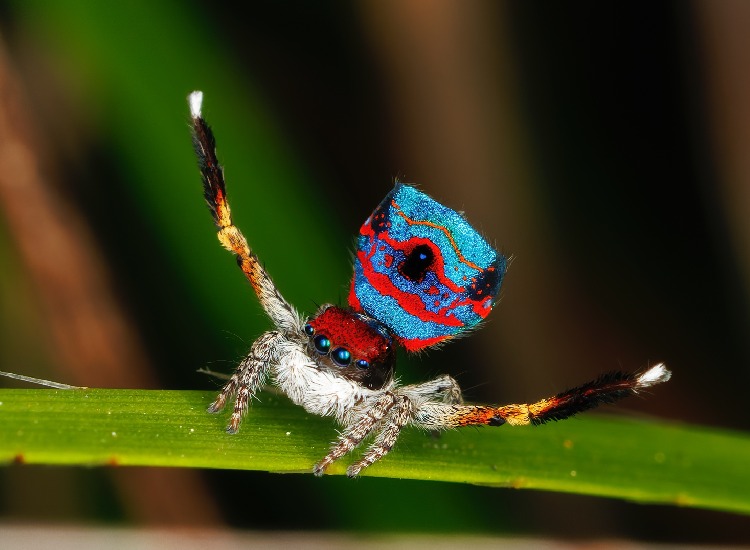
The sparklemuffin spider, scientifically known as Maratus jactatus, is a new species in the family of Peacock Spiders. It was discovered in Queensland, Australia, by a graduate student, Madeline Girard, who named it because of its sparkly, shiny, adorable looks.
The male species are brightly colored and known for their mating dance, like other peacock spiders. The abdomens of the sparklemuffins have bright red and blue stripes and blue-reddish stripes. They are tiny, less than a quarter-inch, with six to eight eyes, powerful enough to see the male species’ bright colors in exquisite detail from a distance. The sparklemuffins are excellent jumpers, with leaps almost 20 times the size of their bodies. Interestingly, these spiders do not spin webs.
These brightly colored spiders use their good looks to attract females and show off their dancing skills. When their wooing efforts fail, females often show their disinterest by lifting their abdomen and also sometimes eating the male.














